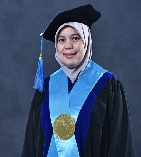Perancangan Teknologi Radio Frequency Identification Dalam Sistem Presensi Peserta Didik Berbasis Internet of Things di Sekolah Menegah Pertama Sejahtera 2 Cileungsi
DOI:
https://doi.org/10.29240/arcitech.v5i1.13968Keywords:
Attendance, IoT, Telegram, RFID, Esp32Abstract
The manual student attendance system at SMP Sejahtera 2 Cileungsi presents several inefficiencies, such as susceptibility to recording errors, time-consuming procedures, and difficulties in accurately summarizing attendance data. Previous studies have proposed RFID and IoT-based systems to improve efficiency, yet most lack features for real-time parental notification. This study aims to develop an automated student attendance system using Radio Frequency Identification (RFID) integrated with the Internet of Things (IoT) and a Telegram bot for immediate communication with parents. The system was developed using the prototyping method, allowing for iterative refinement based on user needs. Attendance is recorded through RFID cards tapped on a reader device, with data stored in a database and exportable to PDF and Excel formats. Black box testing was conducted to validate system functionality. The results indicate that the system enhances accuracy, efficiency, and parental involvement by providing real-time updates. This research contributes to smart education technology by offering a scalable and interactive attendance model that supports administrative digital transformation in schools.
Downloads
References
Alfarizi, L. S., Septiadi, A. D., & Indartono, K. (2020). Pemanfaatan Teknologi Radio Frequency Identification ( RFID ) untuk Sistem Presensi Pegawai. Jurnal Ilmu-Ilmu Informatika Dan Manajemen (STMIK), 14(2), 154–166. https://doi.org/10.33481/infomans.v14i2.140
Candra Permana, B. A., Djamaluddin, M., & Saputra, S. W. (2023). Penerapan Sistem Absensi Siswa Menggunakan Teknologi Internet Of Things. Infotek : Jurnal Informatika Dan Teknologi, 6(1), 170–176. https://doi.org/10.29408/jit.v6i1.7511
Ekowati, M. A. S., Nindyatama, Z. P., Wening, S., & Dananti, K. (2023). Pengembangan Sistem Kelas Cerdas Berbasis Internet of Things (IoT) untuk Proses Pembelajaran Tingkat SMP di Kota Surakarta. JITU : Journal Informatic Technology And Communication, 7(1), 20–33. https://doi.org/10.36596/jitu.v7i1.1015
Fadillah, B., & Nuroji, N. (2025). Perancangan Pemantauan Banjir Realtime Berbasis Internet Of Thing Mengunakan Esp 32 Terintergrasi Thingspeak Dan Notifikasi Bot Telegram Pada Bendungan Kramat Jati. JATI (Jurnal Mahasiswa Teknik Informatika), 9(2), 3035–3041. https://doi.org/10.36040/jati.v9i2.13254
Faritha Banu, J., Revathi, R., Suganya, M., & Gladiss Merlin, N. R. (2020). IoT based Cloud integrated smart classroom for smart and a sustainable campus. Procedia Computer Science, 172(2019), 77–81. https://doi.org/10.1016/j.procs.2020.05.012
Gafur, F., Haifa, N. M., Kamilah, S., & Hidayatullah, R. (2024). Inovasi administrasi peserta didik dalam era society 5.0. 2, 494–502. https://doi.org/https://journal.staittd.ac.id/index.php/at/article/view/173
Mad Cani, Y., & Ali Ridha, A. (2023). Pengujian Black Box Testing Pada Sistem Pendukung Keputusan Penerima Beasiswa di SMK Tarbiyatul Ulum Karawang. Jurnal Ilmiah Wahana Pendidikan, 9(9), 754–760. https://doi.org/10.5281/zenodo.8084698
Nur Adiya, A. Z. D., Anggraeni, D. L., & Ilham Albana. (2024). Analisa Perbandingan Penggunaan Metodologi Pengembangan Perangkat Lunak (Waterfall, Prototype, Iterative, Spiral, Rapid Application Development (RAD)). Merkurius : Jurnal Riset Sistem Informasi Dan Teknik Informatika, 2(4), 122–134. https://doi.org/10.61132/merkurius.v2i4.148
Paul, J., Mitra, A., Kulhadiya, D., Pawar, T., Roy, A., & Sil, J. (2025). A Comprehensive Approach to Real-time Attendance Systems: Integrating Face Recognition and Emotion Detection and with Web Technologies. Procedia Computer Science, 258, 3436–3446. https://doi.org/10.1016/j.procs.2025.04.600
Radouan Ait Mouha, R. A. (2021). Internet of Things (IoT). Journal of Data Analysis and Information Processing, 09(02), 77–101. https://doi.org/10.4236/jdaip.2021.92006
Reddy, M. P., Peeri, A., Srinu, N., & Kumar, K. A. (2025). RFID-Based Attendance Monitoring System with Real-Time Notifications. 10(5), 4440–4445. https://doi.org/10.38124/ijisrt/25may1855
Rizkiawan, M. A., Ramza, H., Nuroji, N., & Sofwan, A. (2024). Data Center Room Monitoring Based on Temperature and Humidity with Internet of Things. Jambura Journal of Electrical and Electronics Engineering, 6(2), 115–123. https://doi.org/10.37905/jjeee.v6i2.23344
Santoso, B., & Sari, M. W. (2024). Design of Student Attendance System Using Internet of Things (IoT) Technology. Journal of Physics: Conference Series, 1254(1). https://doi.org/10.1088/1742-6596/1254/1/012064
Saputra, M. H., & Dristyan, F. (2024). Implementasi Teknologi Absensi Digital Berbasis Objek untuk Meningkatkan Kualitas Proses Belajar Mengajar di Perguruan Tinggi. 1(2018), 62–71.
Singh, P., Elmi, Z., Krishna Meriga, V., Pasha, J., & Dulebenets, M. A. (2022). Internet of Things for sustainable railway transportation: Past, present, and future. Cleaner Logistics and Supply Chain, 4(June), 100065. https://doi.org/10.1016/j.clscn.2022.100065
Suliswaningsih, S., Dwitama, N., & Wijaya, A. B. (2024). Perancangan Sistem Presensi Siswa dengan RFID Berbasis IoT Menggunakan NodeMCU ESP8266. Infotekmesin, 15(01), 15–23. https://doi.org/10.35970/infotekmesin.v15i1.2053
Surantha, N., & Sugijakko, B. (2024). Lightweight face recognition-based portable attendance system with liveness detection. Internet of Things (Netherlands), 25(January), 101089. https://doi.org/10.1016/j.iot.2024.101089
Treskova, M., Aamer, H., Mack, H., Wahlberg, M., Airom, O., Dayabandara, S., Denkinger, C. M., Diener, E., Fransson, P., Heidecke, J., Ulusoy, I., & Rocklöv, J. (2025). Prototyping an internet-of-things-based bioacoustics system to support research and surveillance of avian-associated infectious diseases. Sensing and Bio-Sensing Research, 49(March). https://doi.org/10.1016/j.sbsr.2025.100817
Uminingsih, Nur Ichsanudin, M., Yusuf, M., & Suraya, S. (2022). Pengujian Fungsional Perangkat Lunak Sistem Informasi Perpustakaan Dengan Metode Black Box Testing Bagi Pemula. STORAGE: Jurnal Ilmiah Teknik Dan Ilmu Komputer, 1(2), 1–8. https://doi.org/10.55123/storage.v1i2.270
Wahyudin, Y., & Rahayu, D. N. (2020). Analisis Metode Pengembangan Sistem Informasi Berbasis Website: A Literatur Review. Jurnal Interkom: Jurnal Publikasi Ilmiah Bidang Teknologi Informasi Dan Komunikasi, 15(3), 26–40. https://doi.org/10.35969/interkom.v15i3.74
Zamili, H. M. O., Setiyawati, N., Bangkalang, D. H., & Susetyo, Y. A. (2023). Requirement Engineering Aplikasi Pengelolaan Proses Pertanian Pada Komunitas Tani Menggunakan Loucopoulos Dan Karakostas Iterative Model. JIPI (Jurnal Ilmiah Penelitian Dan Pembelajaran Informatika), 8(2), 572–584. https://doi.org/10.29100/jipi.v8i2.3590
Downloads
Published
How to Cite
Issue
Section
Citation Check
License
Copyright (c) 2025 Maulana Yusuf Widsono, Nuroji

This work is licensed under a Creative Commons Attribution-NonCommercial-ShareAlike 4.0 International License.
Authors who publish with Arcitech: Journal of Computer science and Artificial Intelligence agree to the following terms:
- Authors retain copyright and grant the journal right of first publication with the work simultaneously licensed under a Creative Commons Attribution-NonCommercial-ShareAlike 4.0 International License (CC BY-NC-SA 4.0) that allows others to share the work with an acknowledgment of the work's authorship and initial publication in this journal.
- Authors are able to enter into separate, additional contractual arrangements for the non-exclusive distribution of the journal's published version of the work (e.g., post it to an institutional repository or publish it in a book), with an acknowledgment of its initial publication in this journal.
- Authors are permitted and encouraged to post their work online (e.g., in institutional repositories or on their website) prior to and during the submission process, as it can lead to productive exchanges, as well as earlier and greater citation of published work (See The Effect of Open Access).













